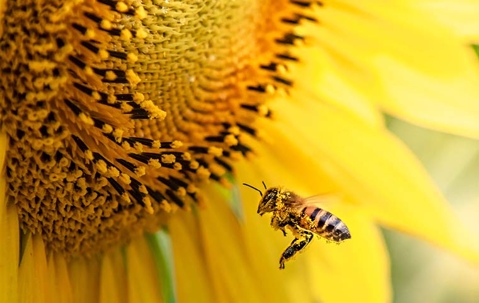If you have a garden with lots of flowering plants, you’ve probably seen a bee flitting from one flower to the other. These tiny insects related to wasps and ants are immensely important for maintaining ecological balance as well as for our well-being. Without bees, our diet would be restricted since we would have a lot lesser selection of fruits, vegetables, nuts and roots to include in our diet. There are numerous types of bees with the best-known species being the European honey bee known the world over for its honey and beeswax production.
7 Most Common Species Of Bees:
Honeybee:
Although honey bees are the most well-known species of bees, they only constitute a minuscule population of the approximately 20,000 known species of bees. They belong to the genus Apisare.
Western Honey Bee:
This species, also referred to as European honey bee, is the most common species worldwide and, due to its honey production capabilities, is one of the species favored by beekeepers for both honey production and pollination.
European Dark Bee:
A sub-species of the honey bee and is also referred to as a German black bee. While not dangerous than the other species, they are an aggressive lot and are known to sting people without any provocation.
Killer Bee:
Killer bee is a term that is associated with the Africanized honey bee. This species is a hybrid and is produced as a result of cross-breeding African honey bee with several European honey bees. This species is much more defensive as compared to its counterparts and are known to attack humans. Since killer bees attack in a group, victims attacked by killer bees receive a greater number of strings than from European honey bees.
Bumblebee:
These tiny bees are distinguishable by their round bodies and soft hair called pile. While bumblebees are social insects and not known to start an unprovoked attack, they are ferocious defenders when their nest is invaded and are known to chase invaders relentlessly over a long distance.
Carpenter Bee:
The name of this species originates from its nesting behavior since they can be found making their nests in hard plant material such as bamboo or dead wood. Carpenter bees are often confused with bumble bees, but unlike bumblebees, they are relatively harmless and not known to sting people unless provoked.
Mining Bee:
Mining bees are solitary bees are building their nests underground.
Finding a bee or two in your garden or close to your home doesn’t mean you are at risk of getting stung. However, a bee nest could be an unnerving sight, and any disturbance to the nest could result in a response from the bees. If you do have a bee nest close to your home, contact a bee removal expert in San Antonio.

